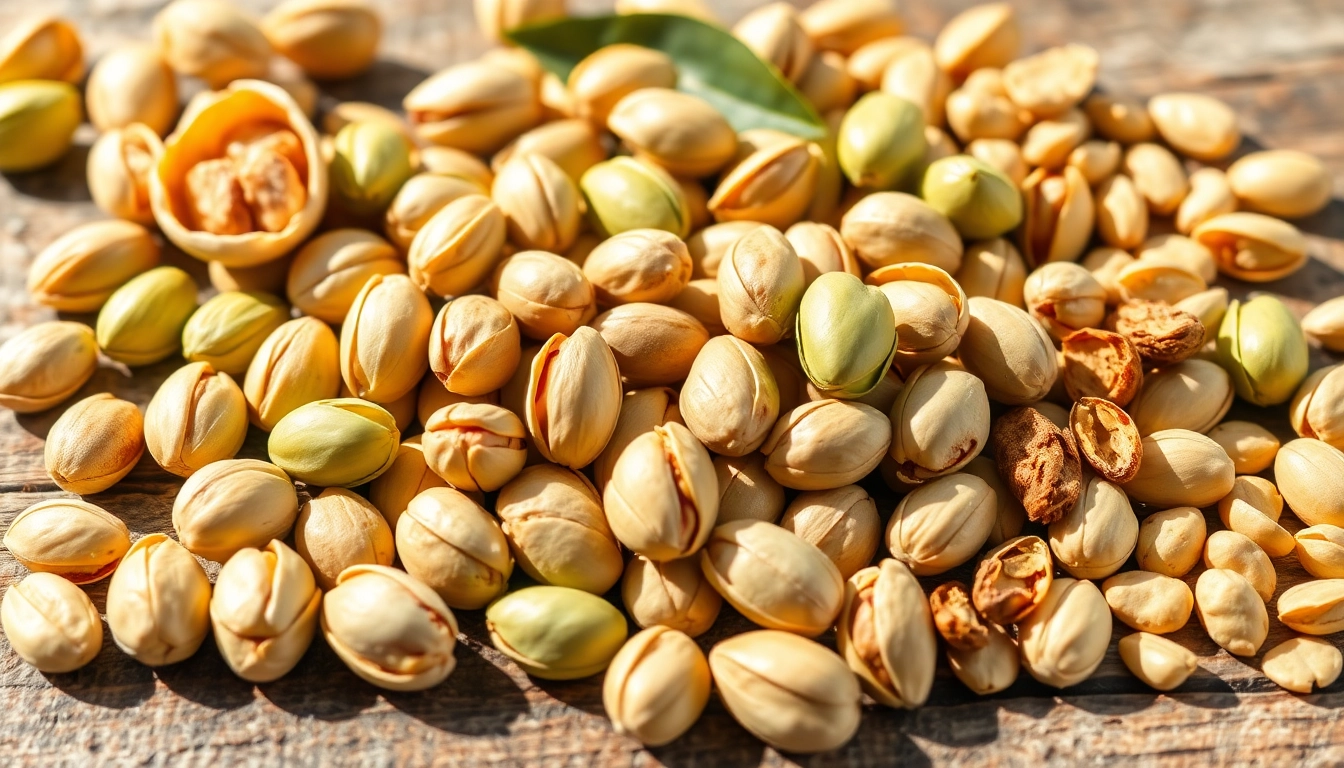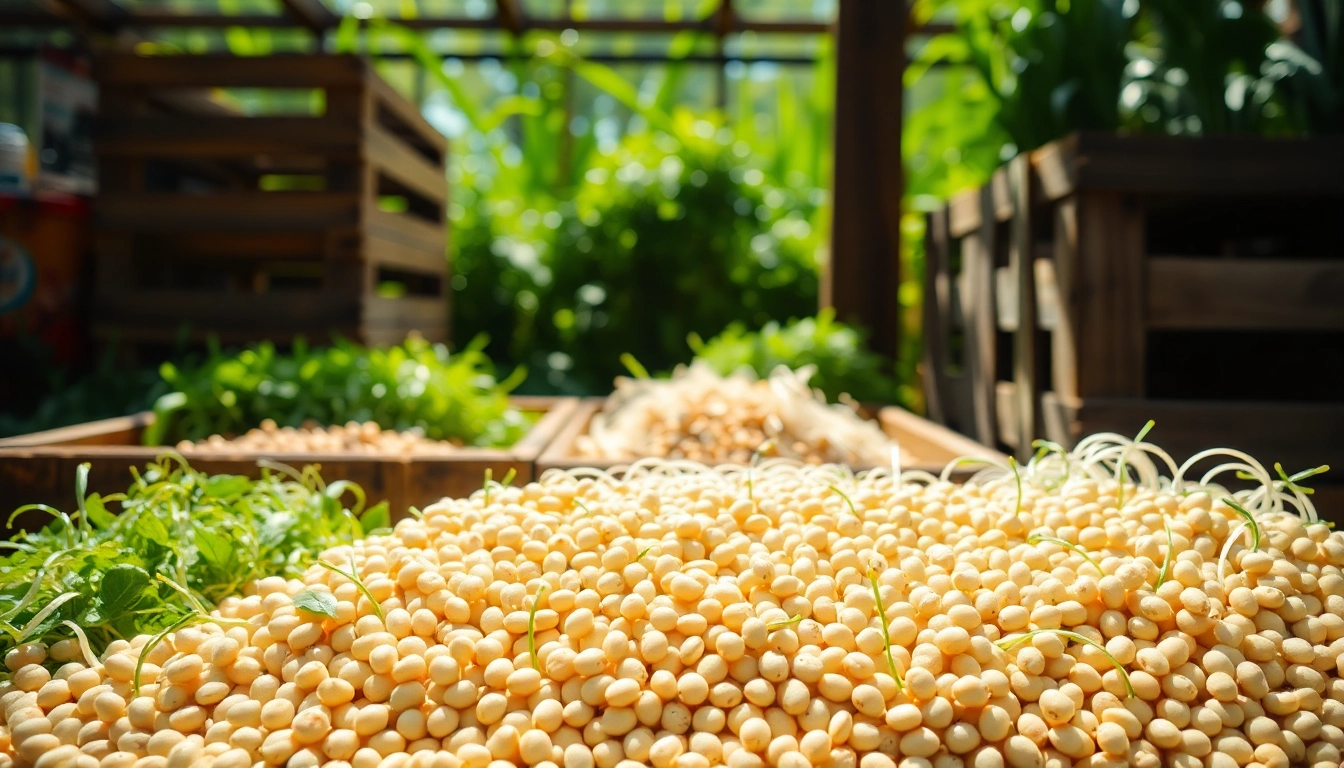Understanding Turmeric Root
Turmeric root, scientifically known as Curcuma longa, is a vibrant yellow rhizome that has been celebrated for centuries due to its culinary, medicinal, and cultural significance. It belongs to the ginger family and is widely recognized for its distinctive flavor and versatility in various cuisines. This article delves deeply into the numerous aspects of turmeric root, encompassing its history, health benefits, practical applications, and its role within holistic health practices.
From ancient traditions to modern health trends, turmeric has gained a place of prominence in the wellness community. If you’re curious about enhancing your well-being through natural means, check out Turmeric Root for high-quality turmeric options.
History and Cultural Significance
The history of turmeric root dates back over 4,000 years, originating in Southeast Asia. Ancient civilizations utilized turmeric not only as a spice but also for its medicinal properties and as a dye. In particular, the Hindu culture reveres turmeric as a symbol of purity, fertility, and auspiciousness. It’s common in Indian weddings, where turmeric paste is applied to the bride and groom, representing prosperity and beauty.
Turmeric has also played a vital role in traditional Chinese medicine, used to treat digestive issues and inflammation. Its incorporation into daily life demonstrates its integral place in cultural practices across various countries, allowing it to transcend mere culinary use and embody a rich tapestry of tradition and healing.
Physical Characteristics of Turmeric Root
Turmeric root is characterized by its thick, knobby texture, with a rough, brown exterior shielding a strikingly vibrant orange-yellow interior. This striking color is indicative of its active compound, curcumin, which contributes to its unique flavor profile and impressive health benefits. The fresh root can be distinguished by its distinct slightly bitter taste with hints of earthiness, and it is typically sold either fresh, powdered, or as an oil. When fresh, it has a firm texture and an aromatic scent that hit the senses, especially when grated or sliced.
Different Varieties of Turmeric
There are several varieties of turmeric, with the most common being:
- Curcuma longa: This is the most widely used variety, particularly in culinary applications.
- Curcuma aromatica: Also known as wild turmeric, this variety has a more intense aroma and is often used in traditional rituals.
- Curcuma zedoaria: Known as white turmeric, this type is used for its medicinal properties and is less flavorful.
Each variety has its unique flavor profile, aroma, and potential health benefits, making it essential to choose the right type for culinary or medicinal applications.
Health Benefits of Turmeric Root
Turmeric root is not merely a culinary delight; it boasts an impressive array of health benefits that have drawn extensive scientific research and cultivated great interest in the holistic health community.
Anti-inflammatory Properties
One of the most renowned characteristics of turmeric is its potent anti-inflammatory properties, largely attributed to curcumin. Inflammation is a natural immune response, but chronic inflammation can lead to various diseases, including heart disorders, cancer, and neurodegenerative conditions. Numerous studies have shown that curcumin can inhibit several molecules known to play significant roles in inflammation, effectively reducing overall inflammatory responses in the body.
A meta-analysis of various clinical trials highlighted that turmeric supplementation was successful in reducing symptoms in conditions such as arthritis, allowing patients to experience relief without the side effects commonly associated with pharmaceutical anti-inflammatory drugs.
Antioxidant Benefits
Beyond its anti-inflammatory effects, turmeric root is a powerful antioxidant, helping to neutralize harmful free radicals that can cause oxidative stress. The antioxidant properties of curcumin play a vital role in protecting the body from cellular damage, which is linked to aging and various chronic diseases.
Research indicates that curcumin can boost the activity of the body’s own antioxidant enzymes, enhancing overall protection against oxidative damage. This dual action not only helps in maintaining a balanced physical state but also aids in cellular regeneration and longevity.
Turmeric Root and Immune System Support
The immune-boosting properties of turmeric root extend beyond its anti-inflammatory and antioxidant traits. Curcumin has been shown to stimulate the production of various immune-regulating cells, such as T-cells and B-cells, playing a significant role in enhancing immune responses against infections and diseases.
Moreover, turmeric has been traditionally used in various cultures to help combat colds and flu, aiding in respiratory health. A study published in the journal Antioxidants explored curcumin’s potential in fighting off infections and reducing the incidence of upper respiratory infections, reinforcing its status as a natural immune booster.
Incorporating Turmeric Root into Your Diet
Integrating turmeric root into your daily diet provides access to its numerous health benefits while enhancing the flavor of your meals. Here we explore various ways to incorporate this vibrant spice into your culinary repertoire.
Recipes Featuring Turmeric Root
Turmeric root can be added to an array of dishes, making it a versatile ingredient. Here are a few recipes that showcase its unique flavor:
- Turmeric Ginger Tea: Blend fresh turmeric and ginger with hot water, honey, and a squeeze of lemon for a refreshing immunity-boosting drink.
- Golden Milk: Combine warm almond milk, turmeric, a pinch of black pepper, and a natural sweetener for a soothing beverage.
- Turmeric Rice: Sauté onions, garlic, and turmeric in olive oil, then add rice and vegetable broth to create a flavorful side dish.
These recipes highlight the versatility of turmeric while providing enhanced flavor and health benefits.
Proper Forms and Dosages
Turmeric can be consumed in several forms—fresh, dried, as a powder, or in supplements. The effectiveness of curcumin may increase when combined with pepper (piperine), which significantly enhances absorption. When considering dosage, the typical recommendation for curcumin supplements ranges from 500 to 2000 mg per day, depending on individual health needs and goals.
For those incorporating fresh turmeric into their diets, a typical amount may range from 1-3 grams daily. It’s advisable to consult with a healthcare professional for personalized recommendations, especially for therapeutic purposes.
Pairing Turmeric with Other Ingredients
Turmeric pairs wonderfully with a variety of ingredients, enhancing not only the flavor profile but also boosting the health benefits. Combining turmeric with black pepper is particularly effective as piperine enhances curcumin’s bioavailability.
Additionally, turmeric complements healthy fats such as coconut oil or avocado, which enhance nutrient absorption. Other pairing options include:
- Citrus Fruits: Like lemons and oranges, which can amplify turmeric’s flavor in drinks.
- Ginger and Garlic: Provide an additional anti-inflammatory boost.
- Leafy Greens: Such as spinach and kale, which provide essential nutrients and create colorful dishes.
By considering these pairings, one can create meals that are both delicious and nutritionally rich.
Medicinal Uses of Turmeric Root
Turmeric root is not only a spice but also a well-regarded component of traditional medicine practices. Its extensive use spans multiple cultures as a natural remedy for various ailments.
Traditional Medicine Practices
In Ayurvedic medicine, turmeric is known as “haridra” and is used for its detoxifying and anti-inflammatory properties. It is often prescribed to treat skin conditions, digestive disorders, and joint pain. In traditional Chinese medicine, turmeric is used to invigorate the blood, alleviate pain, and promote digestive health, reflecting its holistic benefits in balancing the body.
Indigenous cultures also utilize turmeric in their healing rituals and ceremonies, affirming its long-standing position in holistic health practices around the globe. Its applications in folk medicine highlight an intrinsic belief in the plant’s potency and value.
Modern Research and Findings
Modern science is continuously unraveling the vast array of benefits associated with turmeric root. Clinical trials have shown its effectiveness in managing chronic conditions such as arthritis, diabetes, and neurodegenerative disorders like Alzheimer’s disease.
Recent studies demonstrate turmeric’s role in reducing plaque formation in Alzheimer’s patients, as well as its potential in preventing insulin resistance in diabetic patients. As the body of research grows, turmeric’s integration into therapeutic protocols is becoming increasingly commonplace.
Potential Side Effects and Cautions
While turmeric root is generally regarded as safe for most individuals, it is essential to consume it in moderation, as excessive amounts can lead to gastrointestinal issues, including stomach upset and nausea. Individuals who are pregnant, have gallbladder disease, or are scheduled for surgery should consult with a healthcare professional before incorporating large amounts of turmeric into their diet.
Additionally, individuals on blood thinners or certain medications should exercise caution as turmeric may interact with these drugs, potentially altering their effectiveness. Understanding these considerations ensures safe and beneficial use.
Turmeric Root in Holistic Health
In addition to its physical health benefits, turmeric root plays a role in holistic health practices, fostering an overall sense of wellness and balance.
Using Turmeric in Wellness Rituals
Turmeric has found its place in various wellness rituals due to its grounding properties. Many people incorporate turmeric into their meditation practices or spiritual grounding rituals. The use of turmeric in baths or as a topical application serves not only for its skin benefits but also as a means to elevate spiritual cleansing.
Creating a ritual around turmeric consumption, such as brewing turmeric tea or engaging in a “golden milk” evening routine, can foster mindfulness and intentionality in one’s self-care practices.
Turmeric Root in Beauty Products
The cosmetic industry has also embraced the potent properties of turmeric, incorporating it into skincare products for its anti-inflammatory and antioxidant benefits. Turmeric can help reduce acne, brighten skin tone, and diminish the appearance of dark circles.
Homemade face masks, incorporating turmeric and honey or yogurt, can provide a natural glow and improve skin health. However, be mindful of its staining properties and test on a small skin area to avoid any adverse reactions.
Sustainable Sourcing and Environmental Impact
As the demand for turmeric increases, so does the necessity for sustainable sourcing practices. Unsustainable farming methods can deplete soil health and negatively impact local ecosystems. Ensuring that turmeric is sourced from organic and ethically responsible growers contributes to both personal health and environmental sustainability.
By choosing brands that emphasize ethical farming practices, consumers not only receive a quality product but also support equitable labor practices and environmental stewardship, fostering a regenerative approach to agricultural practices.



